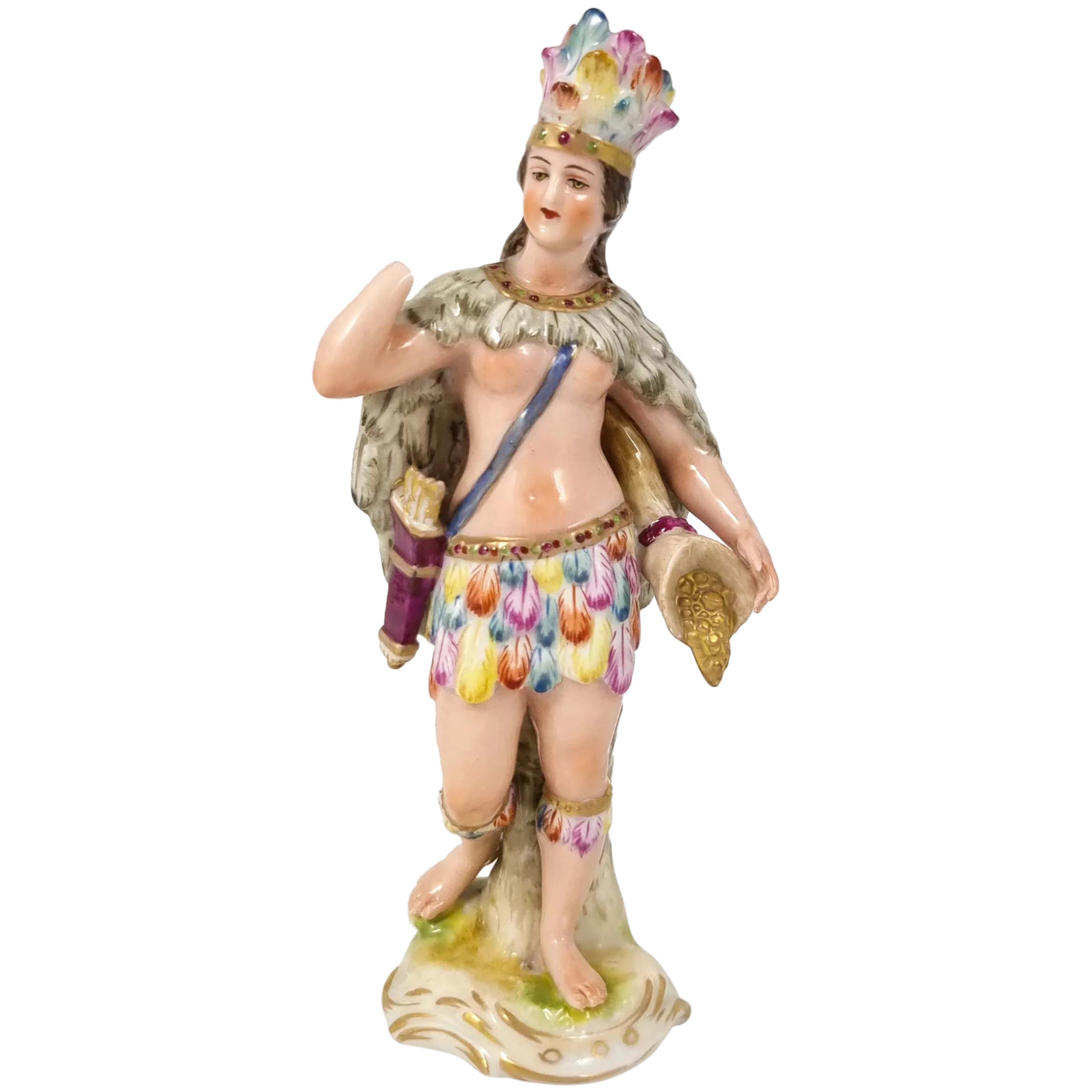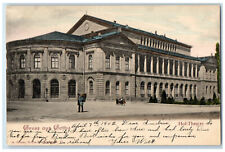When you click on links to various merchants on this site and make a purchase, this can result in this site earning a commission. Affiliate programs and affiliations include, but are not limited to, the eBay Partner Network.
Antique Gotha 1820s allegorical porcelain figurine America “Four Continents” setThis product data sheet is originally written in English.
Early 19th century porcelain allegorical representation of America, from a set of four continents. A young woman dressed in stylized Native American feathered warrior outfit with a quiver full of arrows on one side and the Cornucopia horn of plenty on the other. Richly decorated in bright, multicoloured enamels and resting on a round rocaille gilded base.
Made in Germany, c. 1820’s, possibly by Gotha.
186 g
17 cm tall
One hand missing; repairs to headdress and left side of the head; small nick to glaze near the woman’s left foot.
European artists from the Renaissance onward have visualized the known world through allegorical figures derived from ancient Egyptian, Greek, and Roman personifications. These allegorical figures often took the form of female bodies and were arranged in series of rivers, oceans, regions, continents, and even the cosmos. Early allegories of the continents comprised only Europe, Asia, and Africa, but when Europeans reached the Americas in 1492, it too was incorporated into the existing schema. Australia, which the Dutch explored first in 1606, was never added to the set.
The attributes of the allegories was standardized in the runaway 1593 bestseller Iconologia (often translated as Moral Emblems) by the Italian humanist Cesare Ripa (ca. 1555–1622) and supplemented by contemporary travel accounts. These allegorical figures merge a sexualized young woman (virgin territory) with the symbols and attributes that their makers associated with each continent, in some cases commodities to be traded and resources to be exploited. America is the only allegorical figure Ripa depicted with her breasts bared and beckoning, an allusion to Europe’s desire to further explore her territory. She wears a feather headdress and carries a bow and arrows, with a full quiver in reserve.
(From the essay by Freyda Spira, Associate Curator, Department of Drawings and Prints, The Metropolitan Museum of Art.)
European artists from the Renaissance onward have visualized the known world through allegorical figures derived from ancient Egyptian, Greek, and Roman personifications. These allegorical figures often took the form of female bodies and were arranged in series of rivers, oceans, regions, continents, and even the cosmos. Early allegories of the continents comprised only Europe, Asia, and Africa, but when Europeans reached the Americas in 1492, it too was incorporated into the existing schema. Australia, which the Dutch explored first in 1606, was never added to the set. The attributes of the allegories was standardized in the runaway 1593 bestseller Iconologia (often translated as Moral Emblems) by the Italian humanist Cesare Ripa (ca. 1555–1622) and supplemented by contemporary travel accEuropean artists from the Renaissance onward have visualized the known world through allegorical figures derived from ancient Egyptian, Greek, and Roman personifications. These allegorical figures often took the form of female bodies and were arranged in series of rivers, oceans, regions, continents, and even the cosmos. Early allegories of the continents comprised only Europe, Asia, and Africa, but when Europeans reached the Americas in 1492, it too was incorporated into the existing schema. Australia, which the Dutch explored first in 1606, was never added to the set. The attributes of the allegories was standardized in the runaway 1593 bestseller Iconologia (often translated as Moral Emblems) by the Italian humanist Cesare Ripa (ca. 1555–1622) and supplemented by contemporary travel accEuropean artists from the Renaissance onward have visualized the known world through allegorical figures derived from ancient Egyptian, Greek, and Roman personifications. These allegorical figures often took the form of female bodies and were arranged in series of rivers, oceans, regions, continents, and even the cosmos. Early allegories of the continents comprised only Europe, Asia, and Africa, but when Europeans reached the Americas in 1492, it too was incorporated into the existing schema. Australia, which the Dutch explored first in 1606, was never added to the set. The attributes of the allegories was standardized in the runaway 1593 bestseller Iconologia (often translated as Moral Emblems) by the Italian humanist Cesare Ripa (ca. 1555–1622) and supplemented by contemporary travel acc Year Manufactured 1820 Finish Antique Time Period Manufactured 1800-1849 Colour Multicoloured Material Porcelain Occasion All Occasions Size Small Type Figurine Subject History









